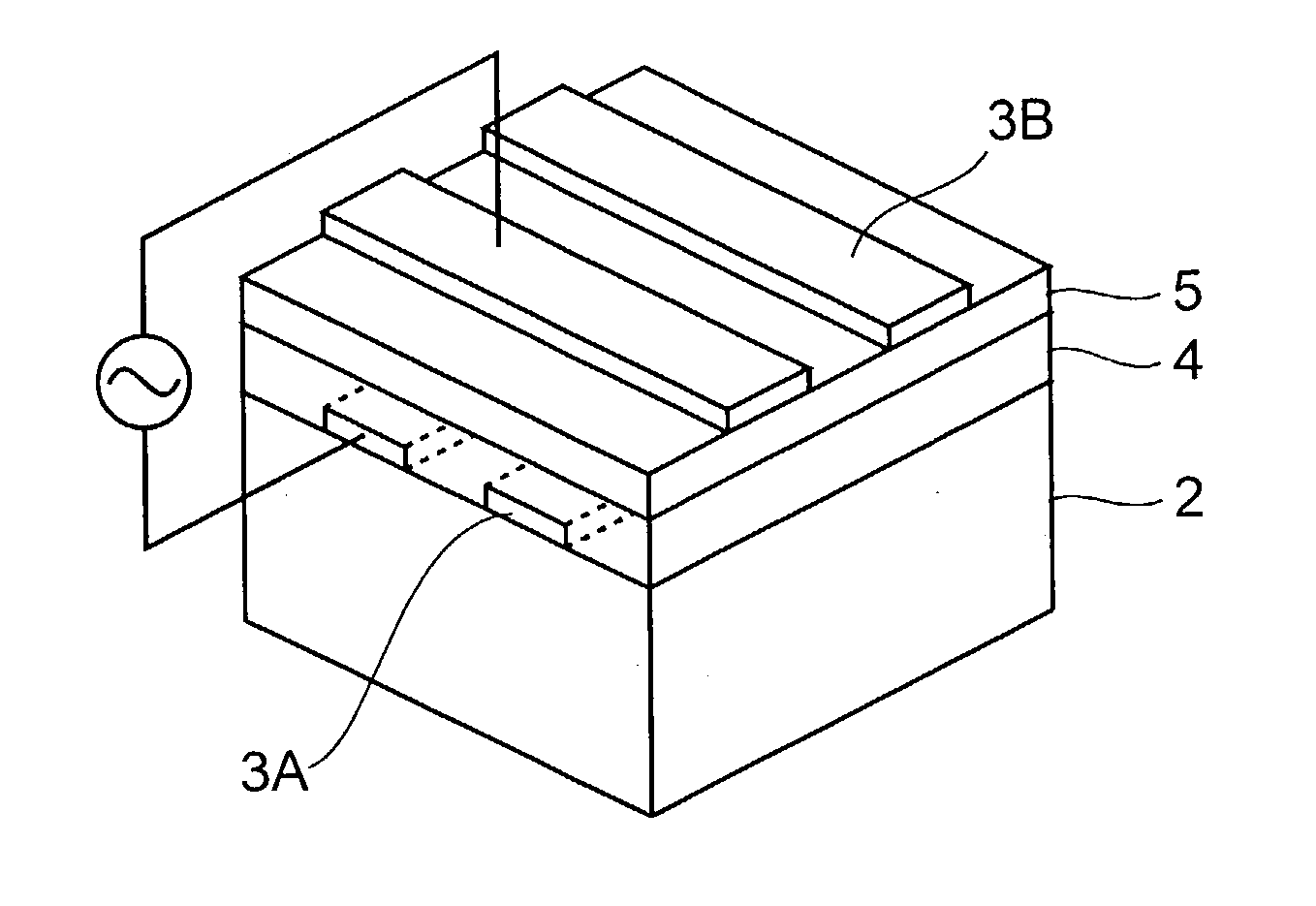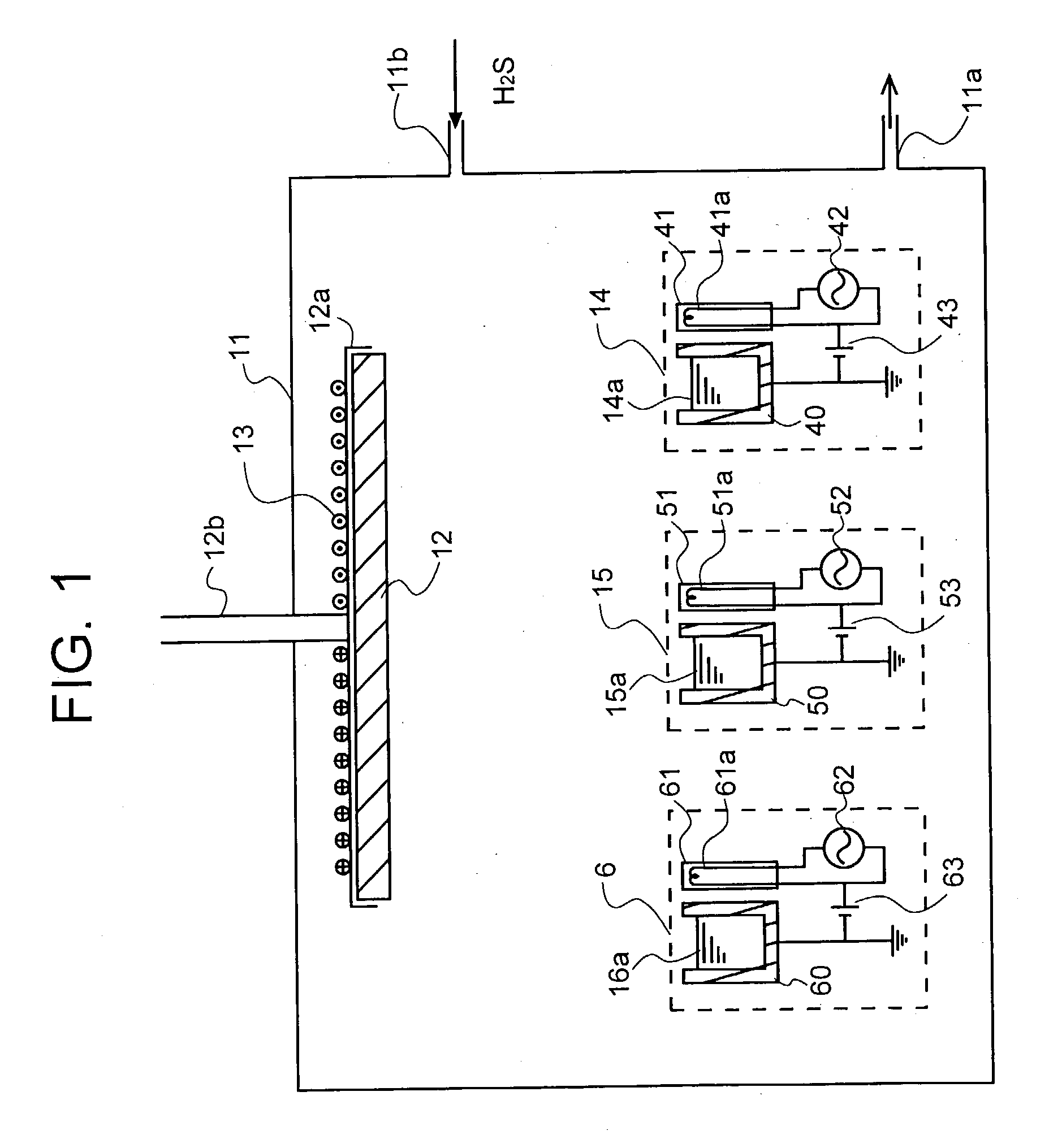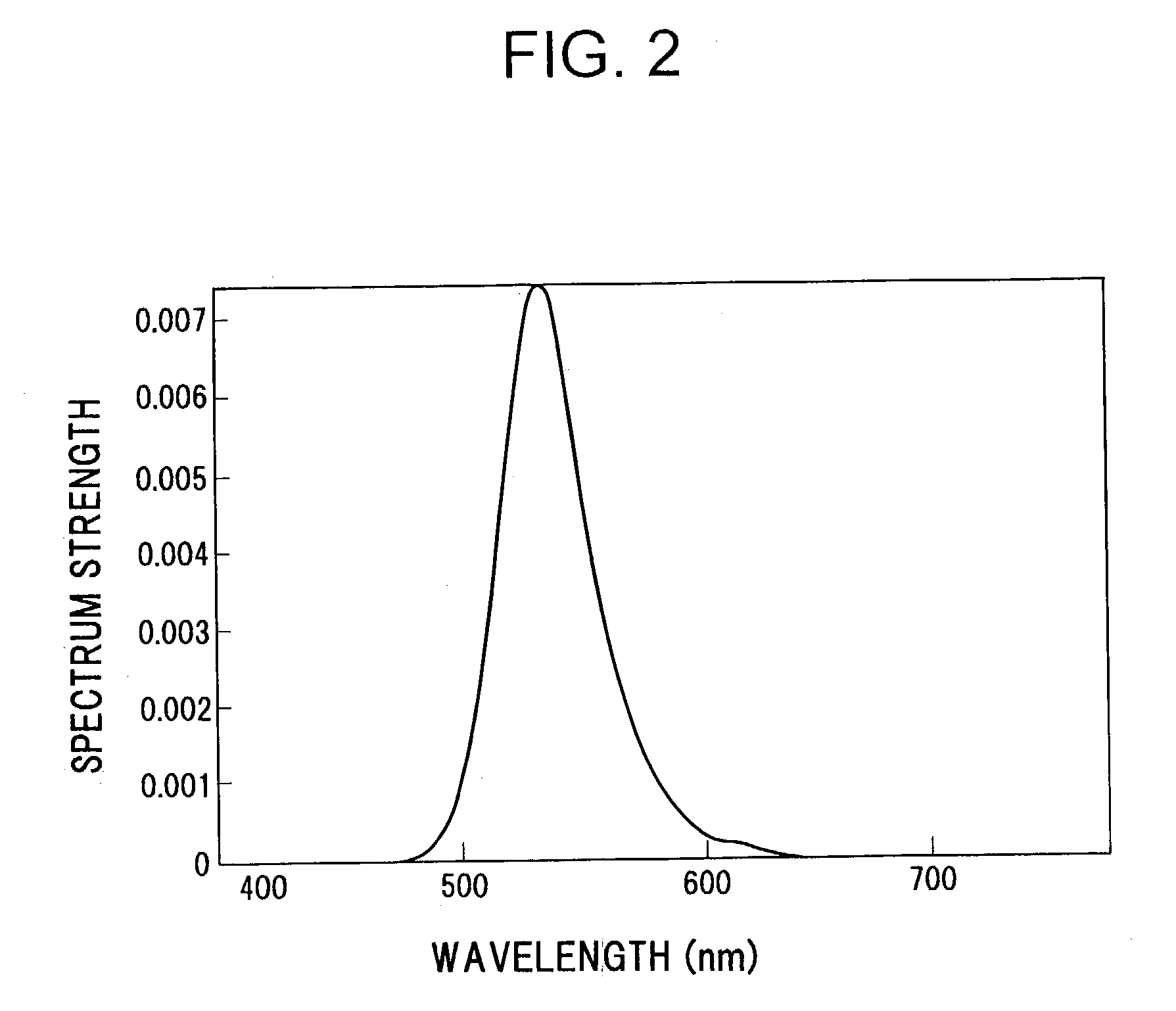Phosphor thin film, preparation method, and EL panel
a technology of phosphor and thin film, applied in the field of phosphor thin film, preparation method, and el panel, can solve the problems of unsuitable color display, green and blue suffer from emission luminance, emission efficiency and color purity, and color el panel has not reached the commercial stag
- Summary
- Abstract
- Description
- Claims
- Application Information
AI Technical Summary
Problems solved by technology
Method used
Image
Examples
example 1
[0102] An EL device (or panel) was fabricated using a phosphor thin film according to the invention. The EL device basically has the structure shown in FIG. 4.
[0103] For the substrate 2 and insulating layer 4, BaTiO.sub.3--PbTiO.sub.-3 base dielectric material having a permittivity of 5,000 was commonly used. For the lower electrode 3A, Pd was used. On fabrication, a sheet of the substrate 2 was formed, and pastes for the lower electrode 3A and insulating layer 4 were screen printed thereon to form green sheets, which were co-fired. The surface of the insulating layer 4 was polished to a thickness of 30 .mu.m. On the insulating layer 4, a BaTiO.sub.3 coating was formed by sputtering as a barrier layer to a thickness of 400 nm. This was annealed in air at 700.degree. C.
[0104] On the barrier layer, a thin film laminate having the structure of Al.sub.2O.sub.3 film (50 nm) / ZnS thin film (200 nm) / phosphor thin film (200 nm) / ZnS thin film (200 nm) / Al.sub.2O.sub.3 film (50 nm) was formed a...
example 2
[0124] An EL device was fabricated as in Example 1 except that a BaS pellet was used instead of the SrS pellet, a Al.sub.2S.sub.3 pellet was used instead of the Ga.sub.2S.sub.3 pellet, and a phosphor thin film of Zn.sub.vBa.sub.xAl.sub.yO.sub.zS.sub.w:Eu having a thickness of 300 nm was formed. The phosphor thin film was analyzed for composition by fluorescent x-ray analysis, finding an atomic ratio (arbitrary unit) as shown below.
1 Zn: 1.40 Ba: 8.86 Al: 16.45 O: 6.88 S: 26.50 Eu: 0.44
[0125] This indicates that the atomic ratios in Zn.sub.vBa.sub.xAl.sub.yO.-sub.zS.sub.w:Eu are:
[0126] v / x=0.16,
[0127] y / x=1.86,
[0128] z / (z+w)=0.21, and
[0129] (v+x+3y / 2) / (z+w)=1.05.
[0130] The Eu content is 5 at % based on Ba.
[0131] The emission performance of the EL device was examined as in Example 1. Blue light emission having a luminance of 700 cd / m.sup.2 was produced in a reproducible manner. For comparison purposes, an EL device was similarly fabricated except that a phosphor thin film of Zn-free B...
example 3
[0133] EL devices were fabricated as in Example 1 except that the values of v / x and y / x in the phosphor thin film of Zn.sub.vSr.sub.xGa.sub.yO.sub-.zS.sub.w:Eu were changed as shown in Table 1. The luminance of these EL devices was measured as in Example 1, with the results shown in Table 1.
2 TABLE 1 Device Luminance No. v / x y / x (cd / m.sup.2) 1 1.27 2.52 631 2 0.05 1.78 1742 3 0.35 2.48 655 4 0.27 1.73 1711 5 0.15 1.86 2170
[0134] The advantages of the invention are evident from Table 1. The luminance of the phosphor thin film is improved by introducing Zn therein. A very high luminance is achieved when v / x is from 0.001 to 1 and y / x is from 1.6 to 1.99.
[0135] In an additional run, phosphor thin films were formed using Ba as element A, In as element B and Eu as the luminescent center, and annealed at a relatively low temperature of 700.degree. C. It was confirmed that the addition of Zn to the phosphor thin film achieved an improvement in the luminance of red light emission.
Benefits o...
PUM
| Property | Measurement | Unit |
|---|---|---|
| Angle | aaaaa | aaaaa |
| Angle | aaaaa | aaaaa |
| Angle | aaaaa | aaaaa |
Abstract
Description
Claims
Application Information
 Login to view more
Login to view more - R&D Engineer
- R&D Manager
- IP Professional
- Industry Leading Data Capabilities
- Powerful AI technology
- Patent DNA Extraction
Browse by: Latest US Patents, China's latest patents, Technical Efficacy Thesaurus, Application Domain, Technology Topic.
© 2024 PatSnap. All rights reserved.Legal|Privacy policy|Modern Slavery Act Transparency Statement|Sitemap



